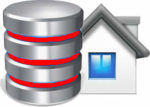Building Applications in the Browser
Programming Firefox (O’Reilly) is the essential guide to building user interfaces and rich internet applications using the Cross Platform Component (XPCOM) library from the Mozilla Foundation. In this work, author Kenneth Feldt applies his years of experience in XUL development to give programmers a comprehensive look at XUL’s capabilities, from simple interface design to complex multi-tier applications with real-time operations.
Programming Firefox serves as both a programmer’s reference and an in-depth tutorial, so readers not only get a comprehensive look at XUL’s capabilities, but also learn how to build a complete working application with XUL. Developers from Java and .NET environments will see how quickly large-scale applications can be constructed with XPCOM and XUL.
“The book is a practical, hands-on introduction to some of these evolving standards that allow developers to combine creativity with technology,” notes Feldt. “Programming Firefox is less of a how-to book and more of a what-if exploration that encourages developers to push the envelope of the Internet experience.” Feldt’s book is ideal for the designer or developer charged with delivering innovative standards-based Internet applications.
Topics in the book include:
An overview of Firefox technology
An introduction to the graphical elements that compose a XUL application
Firefox development tools and the process used to design and build applications
Managing an application with multiple content areas
An introduction to Resource Description Files, and how the Firefox interface renders RDF
Manipulating XHTML with JavaScript
Displaying documents using the Scalable Vector Graphics standard and HTML Canvass
The XML Binding language and interface overlays to extend Firefox
Implementing the next-generation forms interface through Xforms
“I hope this text will play a modest role in helping to educate application developers in how to use Mozilla technology–not for the sake of using a different technical platform, but to demonstrate what is possible when the collective knowledge of the international standards community finds its voice in the marketplace,” says Feldt. “With such a diverse and creative pool of contributors, new Internet applications are possible that feature improvements in responsiveness, greater flexibility of interface design, and more expressive graphics.”
